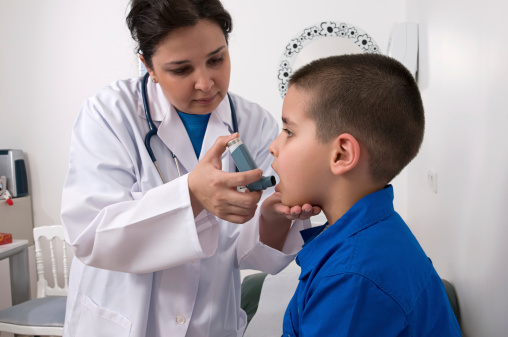
Researchers at the Mailman School of Public Health at Columbia University recently published a study that found a strong link between prenatal exposure to two phthalates, chemicals used in many household products, and development of childhood asthma.
The study found that kids born to mothers exposed during pregnancy to high levels of two phthalates, butylbenzyl phthalate (BBzP) and di-n-butyl phthalate (DnBP) had a 72 percent and 78 percent increase in risk of developing asthma between age 5 and 11, compared to kids born to mothers who were exposed to lower levels of the chemicals.
“Our study presents evidence that these two phthalates are among a range of known risk factors for asthma,” says Robin Whyatt, the lead author of the study and a professor of environmental health sciences at Mailman. Other risk factors for childhood asthma include exposure to tobacco smoke and air pollution, obesity, and a history of allergies, says Whyatt.
Phthalates are used in many common household products such as plastic food containers, vinyl flooring, insect repellent and shower curtains. Beginning in 2009, several phthalates—including BBzP and DnBP, were banned in many children’s items such as toys.
But according to the study authors, there has been little done to make pregnant women aware of the risks.
The word phthalates is rarely included on chemical ingredient lists.
For the study, the researchers followed 300 pregnant women and their children and measured levels of exposure to four phthalates through urine tests done in the third trimester for the mothers and in the children at ages 3, 5 and 7 with testing done at the Centers for Disease Control and Prevention laboratories. The researchers compared asthma risk in the children between ages 5 and 11 year who were born to mothers with urine phthalate levels at the high levels and lowest levels.
Almost a third of the children whose mother’s tests showed high levels of exposure to phthalates developed asthma. Another 60 children had a history of wheeze and other asthma-like symptoms. Two of the phthalates studied, di-2-ethylhexyl phthalate (DEHP) and diethyl phthalate (DEP)—were not linked to children developing asthma.
The researchers say it’s not clear what about the phthalates increases the risk of developing asthma in kids, but inflammation may be a factor.
The study was published in Environmental Health Perspectives.





